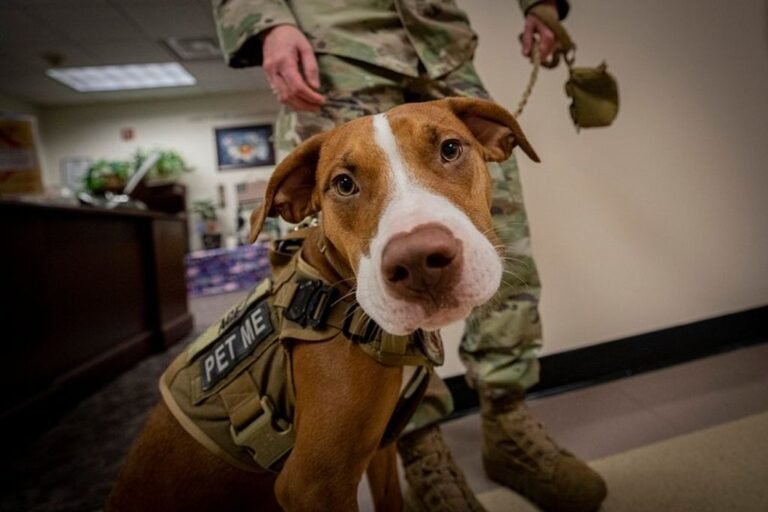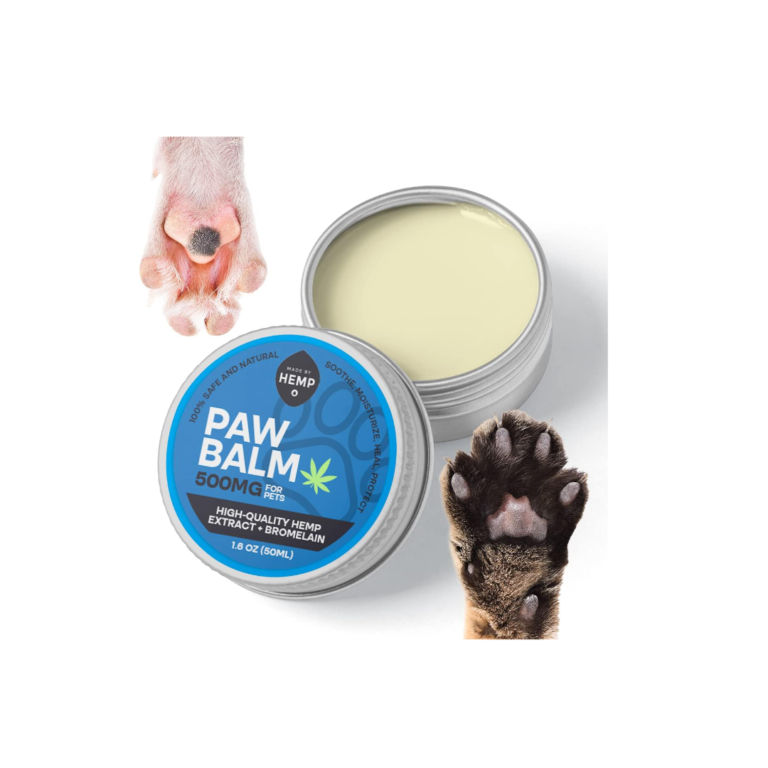Emergency Response for Pets: Quick Actions That Can Save Lives
Pets are treasured members of our families, giving friendship and joy. However, just like humans, pets can face crises that require swift and informed action. This article aims to equip pet owners with life-saving tips for managing various pet emergencies, ensuring the well-being of our furry friends.
Key Takeaways
- Create an emergency kit for your pet with essential supplies
- Identify pet-friendly shelters and evacuation routes
- Recognize common signs of illness or injury in pets
- Learn how to perform CPR and administer first aid for common pet injuries
- Know when to call the vet and find 24/7 emergency veterinary clinics
Understanding the Importance of Emergency Response for Pets

Why Pets Need Emergency Response
As a pet owner, it’s up to you to keep your furry friend safe, healthy, and warm. Along with snuggles, purrs, and excitable barks, pets are vulnerable to unexpected accidents, and you need to be prepared. Knowing how to react in an emergency can be the difference between life and death for a pet. We encourage you to call your veterinarian or visit the emergency room when your pet is hurt; however, swift actions and life-saving techniques can spare your pet or offer quicker recovery. Take an active role in assisting your cat or dog.
The Unique Challenges of Emergency Response for Pets
As a pet owner, it’s up to you to keep your furry friend safe, healthy, and warm. Along with snuggles, purrs, and excitable barks, pets are vulnerable to unexpected accidents, and you need to be prepared. Knowing how to react in an emergency can be the difference between life and death for a pet. We encourage you to call your veterinarian or visit the emergency room when your pet is hurt; however, swift actions and life-saving techniques can spare your pet or offer quicker recovery. Take an active role in assisting your cat or dog.
Preparing for Pet Emergencies

Creating an Emergency Kit for Your Pet
When preparing for pet emergencies, it is essential to create an emergency kit specifically for your pet. This kit should include food, medications, and comfort items to ensure your pet’s well-being during an emergency. It is recommended to store at least 5 days’ worth of non-perishable food and 7 days’ worth of water for your pet. Additionally, make sure to store medicines and any special dietary needs in a waterproof container. Keeping vet/medical records in a waterproof bag and having a photo of them on your phone is also important. Familiar items like blankets or bedding can help relieve stress for your pet. Don’t forget to include sanitation items such as poo bags, litter trays, or old towels. By having a well-prepared emergency kit, you can provide the necessary care for your pet in times of crisis.
Identifying Pet-Friendly Shelters and Evacuation Routes
When preparing for emergencies, it’s crucial to identify pet-friendly shelters and evacuation routes in your area. These are designated locations where you and your pet can seek refuge during a crisis. Pet-friendly shelters provide a safe environment for both you and your furry companion, ensuring that you won’t have to leave them behind. It’s important to research and make a list of these shelters in advance, so you know exactly where to go when disaster strikes.
In addition to pet-friendly shelters, it’s also essential to familiarize yourself with the evacuation routes in your community. These routes are specifically designed to guide people and their pets to safety during emergencies. Knowing the best routes to take can help you avoid traffic congestion and reach a safe location more efficiently. Make sure to include these routes in your emergency plan and share them with your family members.
Remember, being prepared is the key to protecting your pet in times of crisis. By identifying pet-friendly shelters and evacuation routes, you can ensure the safety and well-being of your beloved companion.
Recognizing Signs of Pet Emergencies

Common Signs of Illness or Injury in Pets
Pets often communicate distress through subtle cues. Learn to acknowledge signs of unease, such as changes in behavior, unusual vocalizations, or lethargy. Understanding your pet’s normal behavior is crucial. Any deviation from their usual demeanor might indicate an underlying issue.
Here are some common signs of illness or injury in pets:
- Eating
- Excessive Thirst
- Urination
- Incoordination
- Tremors
- Poisoning Symptoms
- Irritated Paws
- Cold Weather Damage
- Behavior Changes
- Yearly Veterinary Checkup
- Propylene Glycol
- Ethylene Glycol
- Chemicals
- Winter Weather
If you notice any of these signs in your pet, it’s important to take immediate action. Contact your veterinarian or a 24/7 emergency veterinary clinic for further guidance. Remember, early response can save your pet’s life.
Understanding Behavioral Changes in Pets during Emergencies
During emergencies, pets often communicate distress through subtle cues. It’s important to learn to acknowledge signs of unease, such as changes in behavior, unusual vocalizations, or lethargy. Understanding your pet’s normal behavior is crucial, as any deviation from their usual demeanor might indicate an underlying issue.
Here are some important tips to keep in mind:
- Recognize signs of distress: Pay attention to changes in behavior, unusual vocalizations, or lethargy.
- Know your pet’s baseline: Understand your pet’s normal behavior to identify any deviations.
- Create a Pet First Aid Kit: Assemble a comprehensive first aid kit tailored to your pet’s needs, including essentials like bandages, antiseptic wipes, and any prescribed medications.
- Administer CPR to Pets: Learn the basics of pet CPR to provide immediate assistance in emergencies.
Remember, being prepared and knowing how to respond can make a significant difference in your pet’s well-being during emergencies.
Taking Immediate Actions in Pet Emergencies

Performing CPR on Pets
Performing CPR on pets can be a life-saving skill in critical situations. Quick and suitable action is crucial when your pet is not breathing. If you notice signs of distress such as pawing at the mouth, coughing, or difficulty breathing, it’s important to act fast. Here are the steps to perform CPR on your pet:
- Check for a heartbeat: Place your hand on your pet’s chest to feel for a heartbeat.
- Clear the airway: Carefully remove any visible obstructions in their throat.
- Begin chest compressions: Billow (squeeze and thrust their ribcage forward) to blow out dislodged objects in their airways.
- Perform rescue breaths: If your pet is not breathing, gently close their mouth and breathe into their nose.
Remember, there is some risk involved in performing CPR on your pet, but the benefits of starting CPR early outweigh the risk of trauma. Learning how to give CPR to your pet can be life-saving.
Administering First Aid for Common Pet Injuries
Swift actions and life-saving techniques can spare your pet or offer quicker recovery. Take an active role in assisting your cat or dog while you await professional care by learning these essential first aid techniques. Always have your own pet first-aid-kit available both in your home and while on the go.
Contacting Emergency Veterinary Services

Knowing When to Call the Vet
Knowing when to call the vet is crucial in ensuring the health and well-being of your pet. There are certain situations where immediate veterinary attention is necessary. If your pet is experiencing severe or persistent vomiting, diarrhea, or difficulty breathing, it is important to contact your veterinarian right away. Additionally, if your pet has ingested a toxic substance, such as a household cleaning product or a poisonous plant, it is essential to seek veterinary help immediately. Remember, time is of the essence in these situations, and contacting a professional can save your pet’s life.
Finding 24/7 Emergency Veterinary Clinics
When it comes to the health and safety of your beloved pet, it’s crucial to know where to turn in case of an emergency. Finding a 24/7 emergency veterinary clinic is essential for prompt and specialized care. Make sure you have the contact information of a trusted clinic saved in an easily accessible location. Plan ahead and discuss with your veterinarian the nearest emergency clinic and the best route to get there. This way, you won’t have to waste precious time searching for help when every second counts.
In case of an emergency, keep these numbers handy:
- Your veterinarian’s clinic phone number
- 24/7 emergency veterinary clinic (if different)
Remember, quick action can make all the difference in saving your pet’s life.
Handling Pet Emergencies at Home

Dealing with Common Household Pet Emergencies
When it comes to dealing with common household pet emergencies, it’s important to stay calm and act quickly. Manual scooping is one technique that can be used to address certain issues. If your pet ingests something toxic, it’s crucial to contact your veterinarian or an emergency poison control hotline immediately. They can provide guidance on the next steps to take. Additionally, it’s important to be aware of common household items that are toxic to pets, such as certain foods, plants, and household chemicals. Taking preventive measures, like keeping these items out of your pet’s reach, can help avoid emergencies. Remember, your quick actions can make a big difference in ensuring the safety and well-being of your furry friend.
Creating a Pet-Safe Environment in Your Home
When it comes to creating a pet-safe environment in your home, there are a few key steps you can take to ensure the well-being of your furry friend. First and foremost, it’s important to remove any potential hazards from your pet’s reach. This includes keeping toxic substances, such as cleaning products and medications, securely stored away. Additionally, be mindful of any small objects or packaging that could be tempting for your pet to play with or eat. Creating a clean and clutter-free home is essential for your pet’s safety.
Another important aspect of creating a pet-safe environment is providing your pet with a comfortable and quiet place indoors where they can retreat. This can be a designated room or a crate that is away from any commotion. It’s important to inform your guests ahead of time about your pets and make sure they are aware of any allergies or sensitivities. By doing so, you can reduce emotional stress on your pet and ensure the safety of your guests.
In summary, creating a pet-safe environment in your home involves removing hazards, providing a comfortable retreat for your pet, and informing your guests about your pets. By following these steps, you can create a safe and welcoming space for both your pet and your visitors.
Preparing for Natural Disasters and Emergencies

Protecting Your Pet during Hurricanes and Floods
During hurricanes and floods, it is crucial to take immediate actions to ensure the safety of your pet. Here are some important steps to follow:
-
Plan ahead to protect your pet: Create a Pet Disaster Plan before a hurricane or flood. This plan should include safe places to take your pet, as some evacuation centers may not permit pets. Communicate your plan with your family or friends to ensure everyone is on the same page.
-
Prepare a Disaster Survival Kit: Gather essential emergency survival items for your pet, including food, water, medications, and a leash. It is also recommended to keep an electronic version of important documents and a current photo of your pet.
-
Practice your plan: Make sure your pet is familiar with your disaster plan. Conduct practice runs, especially in low-light conditions, to help them navigate better during an actual emergency. Additionally, acclimate your pet to traveling in their carrier or cage in the car to prevent panic.
Remember, being prepared for a natural emergency can make a significant difference in the safety and well-being of your pet. By following these steps, you can protect your furry friend and ensure their comfort during hurricanes and floods.
Preparing for Earthquakes and Wildfires with Pets
When it comes to preparing for earthquakes and wildfires with pets, there are a few important steps you can take to ensure their safety. Plan ahead to protect your pet by creating a Pet Disaster Plan. This plan should include identifying safe places to take your pet in case of evacuation, as not all evacuation centers permit pets. Communicate your plan with family or friends to ensure everyone is on the same page.
Next, prepare a Disaster Survival kit for your pet. This kit should include essential items such as non-perishable food, water, medicine, and vet/medical records. It’s important to store at least 5 days’ worth of food, 7 days’ worth of water, and any necessary medications in a waterproof container.
Lastly, practice your plan with your pets. Make sure they are familiar with the plan and can move quickly during an emergency. Doing a practice run in the dark can help them navigate better if disaster strikes at night. Additionally, get your pets comfortable with traveling in their cages/carriers in the car to prevent panic during evacuation.
By following these steps, you can better manage your pets during earthquakes and wildfires, ensuring their safety and well-being.
Preparing for natural disasters and emergencies is crucial for the safety and well-being of both humans and pets. At Whisker Wellbeing, we understand the importance of holistic and natural care for pets, especially during challenging times. Our wide range of products, including CBD, hemp, and other natural options, are specifically designed to enhance the physical and emotional quality of life for cats and dogs. Whether it’s preparing an emergency kit, creating a disaster plan, or finding natural remedies to alleviate stress and anxiety, Whisker Wellbeing is here to support you and your furry friends. Visit our website to explore our products and learn more about how we can help you and your pets thrive.
Conclusion
In conclusion, being prepared and knowing how to respond in an emergency can make all the difference in saving your pet’s life. By recognizing signs of distress, creating a pet first aid kit, and learning essential techniques such as CPR and the Heimlich maneuver, you can be ready to take swift action when your pet needs it most. Additionally, preventive measures such as regular veterinary check-ups, pet-proofing your home, and enrolling in pet first aid courses can help prevent emergencies from happening in the first place. Remember, your furry friend relies on you for their safety and well-being, so take the time to educate yourself and be prepared. Together, we can ensure that our pets receive the care they need in times of crisis.
Frequently Asked Questions
What should I include in my pet’s emergency kit?
Your pet’s emergency kit should include essentials like bandages, antiseptic wipes, any prescribed medications, and a leash or carrier.
How do I perform CPR on my pet?
To perform CPR on your pet, place them on a flat surface, extend their head and neck, close their mouth, and perform chest compressions. You can also give rescue breaths if needed.
What are the common signs of illness or injury in pets?
Common signs of illness or injury in pets include changes in behavior, unusual vocalizations, lethargy, loss of appetite, difficulty breathing, vomiting, diarrhea, and limping.
How can I create a pet-safe environment in my home?
To create a pet-safe environment in your home, remove hazards such as toxic plants, secure potentially harmful items, and use safety gates or barriers to restrict access to certain areas.
When should I call the vet during a pet emergency?
You should call the vet during a pet emergency if your pet is experiencing severe bleeding, difficulty breathing, unconsciousness, seizures, or any other life-threatening condition.
How can I protect my pet during natural disasters?
To protect your pet during natural disasters, have a plan in place, including identification tags, microchipping, and a pet emergency kit. Keep your pet indoors and away from windows during storms.







